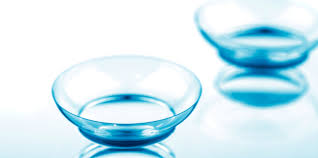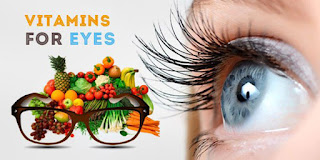What do
your eyes tell you about your health?
 |
| Eyes Reflection About Health |
Health can be reflected in the eyes. Because sometimes the
eye problems are symptoms of others in our body or they indicate bad habits
that must be corrected. Do you know what manifestations in our eyes warn us
that we have to review something in our body or lifestyle? What signals do you
have to take into account and how to act in each case?
CONSTANT TEARING
"The most frequent causes of this problem are the
obstruction of the lacrimal ways in any part of its route or a dry eye syndrome
that triggers a tearing reflex," explains Dr. Ángel Saiz, ophthalmologist
and member of TopDoctors.es. In the first case, it reveals eye problems, but
the dry eye can indicate hormonal alterations, such as a drop in estrogen
(menopause), a side effect of some drugs such as antihistamines, the excessive
use of contact lenses, the influence of environmental factors ( pollution,
heating, air conditioning ...) or even diseases such as diabetes mellitus or
Parkinson's.
How to act: "Using artificial tears many times
alleviates the problem of dry eye," says the expert. Even so, check with
your doctor to rule out pathologies. Regarding the obstruction of the lacrimal
ducts, a new drainage route is usually created, either by surgery or by diode
laser (the intervention is then performed on an outpatient basis).
EYE SPICY
"It's almost always indicative of an allergic
condition," says Dr. Saiz. But it can also indicate an overexertion (a
long exposure to the computer screen during the workday) or, for example, a
direct contact with harmful agents such as pool chlorine.
How to act: "Above all, do not rub your eyes. If we are
allergic, avoid dust, change clothes and shower when you get home to eliminate
the rest of pollen helps. An ophthalmologist is the one who should prescribe
the appropriate treatment, but artificial tears and cold compresses relieve.
"
YELLOWY SCLERTICS
The sclera, the white part of the eye, sometimes acquires a
yellow hue. "It can indicate an accumulation of bilirubin that usually
occurs in diseases of the liver (hepatitis, gallstones ...). But it can also be
due, simply, to ingest many carotenes (carrots), "says the
ophthalmologist.
How to act: go to consultation, "to have a blood test
to indicate the diagnosis". And, obviously, if it is an excess of
carotenes, reduce the intake of these.
RED SPOTS OR VENITES
Although you see these spider-shaped capillaries in the
sclera, they actually occur in the conjunctiva (a thin membrane that covers the
inner surface of the eyelid and the white part of the eyeball). Dr. Saiz points
out: "The subconjunctival hemorrhage or spill does not generally have any
transcendence and occurs spontaneously."
How to act:"It is convenient, however, to measure blood
pressure in case hypertension is capable of breaking a conjunctival vessel,"
says Dr. Saiz. For that, talk to your doctor or nurse, because it is not enough
to register it during a single day: you have to have an evolution of it (you
can also do it in your pharmacy). On the other hand, "people who are
taking anticoagulants must have an anticoagulation control to verify any type
of anomaly or readjust their treatment", adds the expert.
INSIDE THE BLANKING EYE
"The inner part of the eyelid usually has a pink color.
The pallor of this area may indicate the presence of anemia, "says Dr.
Saiz.
How to act: an unbalanced diet and poor iron and abundant
rules are the most common causes of anemia in women. Talk to your doctor to do
an analysis and eat foods rich in iron and vitamin C (needed to absorb it).
Take meat, eggs, lentils, spinach, citrus ...
TEMPLE OF EYELASH
"It is called myokymia. It does not usually have
transcendence and gives in on its own, "says the expert. It can affect any
person and in any circumstance. What can it reveal? "Excessive consumption
of caffeine, alcohol or some medications, also anxiety, lack of sleep or
staying too long in front of the computer or television. The problem is that
these are already part of the lifestyle of most people today. "
How to act:"Avoid coffee, alcohol (all exciting) and
stress shortens its demise. It is necessary to consult with the doctor if it
lasts more than a week or is associated with an oscillating vision, since this
type of myokymia affects the ability to see, "says the doctor.
DRYNESS
"In addition to environmental causes or computer abuse,
dryness is a symptom of hormonal changes, especially around menopause, and can
also indicate autoimmune diseases such as arthritis or lupus. On the other
hand, some medications for blood pressure, antihistamines, antidepressants and
sleeping pills can both cause it and aggravate it. "
How to act: "You should use artificial tears and assess
the use of a humidifier at home," says the expert.
ORZUELOS
They appear spontaneously or "associated with chronic
inflammations of the eyelid margin ", and accompanied by tearing and
redness of the eye or eyelid. They do not usually matter.
How to act: "A good cleaning of the eyelids prevents
them (wash them with clean water, without soap, eliminating any type of rest).
But, when they do appear, it's important to apply moderate heat for 5 minutes
three times a day to help their resolution. “To do this, use compresses heated
with hot water and let them act for a while.
CONJUNCTIVITIS
It is one of the most common eye problems. "And they
can be of many types: allergic (carpets, grass, dust mites, contact lenses,
cosmetics ...), bacterial, viral (they can be associated with infections of the
upper respiratory tract, colds or sore throat)".
How to act: maintain good hygiene (clean the eyes with water
or saline); If the secretion is abundant, you must go to the doctor to apply
the corresponding treatment. "The presence of a small lump (ganglion) in
front of the ear indicates a very contagious process, conjunctivitis due to
adenovirus, which requires sick leave and consultation with a specialist,"
says Dr. Saiz.
IMPROVE CUSTOMS
According to Dr. Ángel Saiz: "Sight is the most
important sense we have and current habits make us use our eyes as we have
never done before. In consultation we find it impossible to ask our patients
not to abuse computers, tablets, television, but to recommend that, from time
to time, look away without focusing on anything to relax the accommodation and
often use tears artificial to counteract the environmental dryness and produced
by the decrease in flicker that involves spending a lot of time in front of the
screens. On the other hand, an annual visit to the ophthalmologist to control
intraocular pressure and the fundus is important, especially after 40 years. In
this way, we contribute to the health of our eyes. "
NUTRIENTS FOR YOUR EYES
-Calcium: strengthens
the sclera. Take yogurt, cheese, kefir, canned sardines...
-Chrome: improves
the functioning of the ciliary muscle (focuses and centers the vision of the
eye). Whole
grains, nuts, turkey ... -Vitamins B2, B12 and folic acid:
protect the conjunctiva. Seafood, mussels, blue fish, egg ... Spinach, Swiss
chard, etc.
-Vitamins C, E and B2: are beneficial for the lens (kiwi,
orange, wheat germ, brewer's yeast, sunflower seeds, flax seeds, etc.).






























